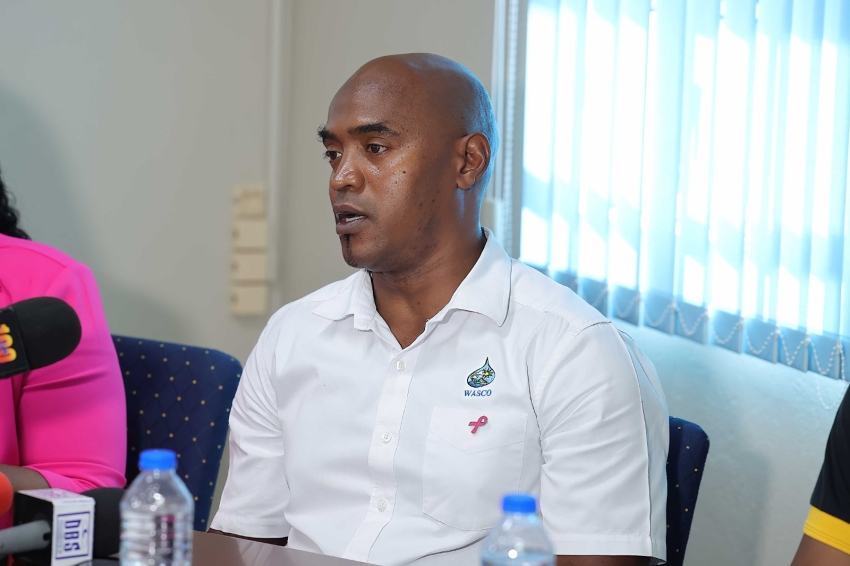However, Chief of Operations Aly Anthony has cautioned that persistent leaks along a five-kilometer section of pipeline continue to threaten the island’s water security, stressing that a complete replacement is the only lasting solution.
“The major one that we had the emergency shutdown for was successfully repaired,but this five-kilometer section of pipeline still has a number of leaks. Every time you do a significant repair, the smaller ones start developing and get worse. Until that entire stretch is replaced, we won’t have full relief.”
The aging pipeline, which serves approximately 58 percent of WASCO’s customers, extends from Millet to Cap Estate, supplying communities across Saint Lucia’s northern corridor.
According to Anthony, the deterioration of the line means additional leaks, and by extension, disruptions are almost certain to recur in the coming months.
In anticipation of the busy tourism period, WASCO plans to carry out a planned maintenance shutdown in November to minimize the risk of unscheduled disruptions during the Christmas and cruise season.
“We’re hoping to do a planned maintenance on that pipeline before the Christmas season. We know the tourism sector is booming, and we want to ensure the public is informed well in advance. We’ll be using all communication channels, social media, radio, television, and even town criers, to make sure everyone is prepared.”
He emphasized the difference between an emergency shutdown and a planned one. “With a planned maintenance, customers can store water and prepare. But when a pipeline bursts unexpectedly, we have no choice but to shut down immediately to prevent further damage,” he said.
While WASCO continues to stabilize supply, Anthony acknowledged that residents in high-elevation areas, including Monier, and Cap Estate, remain among the hardest hit, as water pressure takes longer to build up in those zones.
“Those higher elevations are always the ones that suffer first and recover last,” he said. “It’s simply a matter of physics and pressure, the water takes longer to get there.”
Other areas such as Dennery, Micoud, Vieux Fort, and Laborie, which are fed from different systems, remain largely unaffected.
Anthony and his team highlighted the extreme conditions under which WASCO staff operate, often traversing snake-infested forests and steep, unstable terrain to reach damaged pipelines.
“It’s really dangerous work,” he said. “When we get emergencies, our staff have to go into areas that are difficult and risky. We just want the public to understand the challenges we face and to be patient and cooperative as we work to restore their supply.”
He also reminded the public that heavy rainfall does not guarantee increased water availability. Flooded rivers often clog the company’s intakes with debris, preventing water from reaching treatment plants.
“When it rains heavily, our staff cannot go into those flooded rivers,” Anthony explained. “So even though people see rain, that doesn’t mean water is being conveyed to our treatment facilities.”
Anthony revealed that yields from the Babonneau Hill 20 water sources have dropped by 50 percent, largely due to declining rainfall. “That’s a big number,” he said. “We’ve lost half our capacity there simply because of the lack of rain.”
The company is currently pursuing multiple infrastructure projects to enhance water reliability, including the continuation of the 20-inch Raw Water Pipeline Project and an upgrade to the Theobalds Water Treatment Plant. Additionally, WASCO is exploring desalination plants as part of its long-term strategy.
WASCO has also been promoting household water storage initiatives, encouraging customers to install storage tanks as a buffer during low-pressure or no-supply periods.


